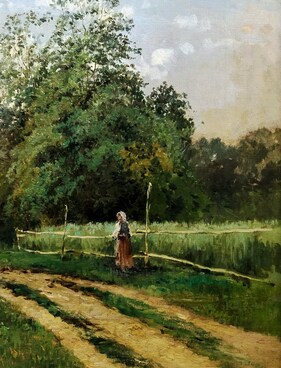In 1747, the Ural Iron Foundry was founded by the Tula merchant Yakov Korobkov in the Yekaterinburg uyezd on the bank of the Kasli River. In 1751, the foundry was bought by Nikita Nikitich Demidov. At the beginning of the 19th century, it became the property of Lev Rastorguyev, a merchant from Volsk.
The first experiments in the development of artistic products date to the second quarter of the 19th century. The foundry produced industrial cast iron and iron. From the middle of the 19th century, it also produced artistic iron castings — sculptures, candlesticks, ashtrays and high-quality desk accessories. Their production involved complex technologies of molding and casting with subsequent hand chasing.
Back then, the quality of castings of the Kasli foundry was already on par with that of similar products made of bronze, which earned gold medals at all-Russian and world exhibitions.
An important role in the formation of the Kasli art casting was played by Mikhail Denisovich Kanayev and Nikolay Romanovich Bach — the sculptors who graduated from the Saint Petersburg Academy of Arts.
In 1876, Kanayev created an art school at the foundry, where students learned how to draw, model, mold and chase iron castings. He also suggested that the range of Kasli cast iron products include works by the most famous Russian sculptors: Pyotr Karlovich Klodt, Ivan Petrovich Vitali, Yevgeny Alexandrovich Lanceray, Artemy Lavrentyevich Ober and Nikolay Ivanovich Liberich. In the 1880s, newly graduated sculptors of the school began working at the factory, including Vasily Fyodorovich Torokin, Davyd Ivanovich Shirokov and Dmitry Klementyevich Tarasov.
The molder Fyodor Petrovich Teplyakov created the composition based on the figurine of the French sculptor and animalier Pierre-Jules Mêne. The narrative of the genre scene with animals “Setter with a Partridge” gravitates toward realism. The hunting dog stands frozen as it smells the bird.
The setter’s posture is tense, the body is slightly turned to the side, the tail is raised, the hind legs are bent, and the front legs are wide apart. The dog looks at the partridge.
The pedestal of the sculptural composition “Setter with a Partridge” has a relief surface with environmental details — stony soil with thin vegetation and a bird hiding in the grass.


